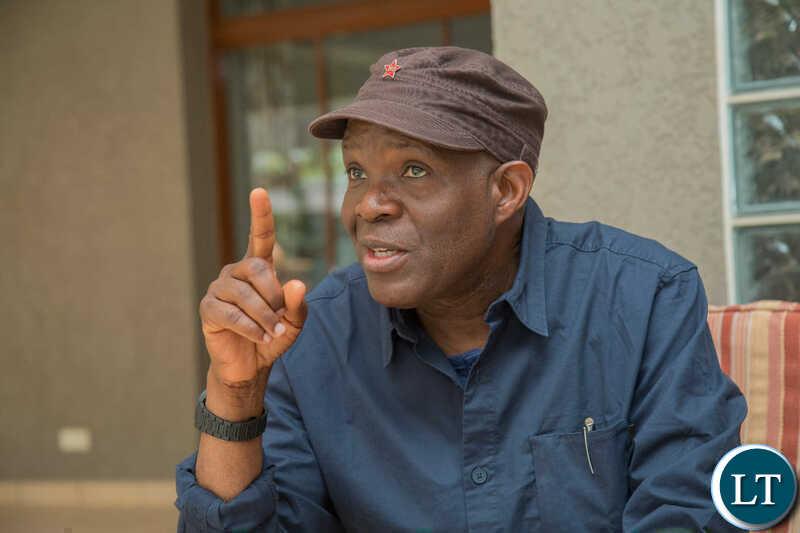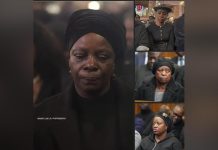Africa-Press – Zambia. What we have as political leaders in Zambia today are nothing but what Malcolm X aptly explained in the parable of “house Negro” at King Solomon Baptist Church, Detroit in a message to the Northern Negro Grass Roots Leadership Conference on November 10, 1963.
The current political leaders of our country want to be more closer and of greater service to the transnational corporations than their owners. They want to be more closer and of greater service to imperialism than the imperialists themselves. Malcolm X told the conference:
“To understand this, you have to go back to what the young brother here referred to as the house Negro and the field Negro back during slavery. There were two kinds of slaves, the house Negro and the field Negro. The house Negroes – they lived in the house with master, they dressed pretty good, they ate good because they ate his food – what he left. They lived in the attic or the basement, but still they lived near their master; and they loved their master more than their master loved himself. They would give their life to save their master’s house – quicker than the master would. If the master said, ‘We got a good house here,’ the house Negro would say, ‘Yeah, we got a good house here.’ Whenever the master said ‘we,’ he said ‘we.’ That’s how you can tell a house Negro.
If the master’s house caught on fire, the house Negro would fight harder to put the blaze out than the master would. If the master go sick, the house Negro would say, ‘What’s the matter, boss, we sick?’ We sick! He identified himself with his master, more than his master identified with himself. And if you came to the house Negro and said, ‘Let’s run away, let’s escape, let’s separate.’ The house Negro would look at you and say, ‘Man, you crazy. What you mean, separate? Where is there a better house than this? Where can I wear better clothes than this? Where can I eat better food than this?’ That was that house Negro. In those days he was called a ‘house nigger.’ And that’s what we call them today, because we’ve still got some house niggers running around here.
This modern house Negro loves his master. He wants to live near him. He’ll pay three times as much as the house is worth just to live near his master, and then brag about ‘I’m the only Negro out here.’ ‘I’m the only one on my job.’ ‘I’m the only one in this school.’ You’re nothing but a house Negro. And if someone comes to you right now and says, ‘Let’s separate,’ you say the same thing that the house Negro said on the plantation. ‘What you mean, separate? From America, this good white man? Where you going to get a better job than you get here?’ I mean, this is what you say. ‘I ain’t left nothing in Africa,’ that’s what you say. Why, you left your mind in Africa.”
And in an address to the African Students Association and NAACP Campus Chapter, Michigan State University, East Lansing on January 23, 1963 on “The Problem of Race”, Malcolm X explained the difference between the house Negro and the field Negro:
“So you have two types of Negro. The old type and the new type. Most of you know the old type. When you read about him in history during slavery he was called ‘Uncle Tom’. He was the house Negro. But then you had another Negro out in the field. The house Negro was in the minority. The masses – the field Negroes were the masses. They were in the majority. When the master got sick, they prayed that he’d die. If his house caught on fire, they’d pray for a wind to come along and fan the breeze.
But if you went to the field Negro and said, ‘Let’s go, let’s separate,’ he wouldn’t even ask you where or how. He’d say, ‘Yes, let’s go.’ And that one ended right there.
So now you have a twentieth-century-type of house Negro. A twentieth-century Uncle Tom. He’s just as much an Uncle Tom today as Uncle Tom was 100 and 200 years ago. Only he’s a modern Uncle Tom. That Uncle Tom wore a handkerchief around his head. This Uncle Tom wears a top hat. He’s sharp. He dresses just like you do. He speaks the same phraseology, the same language. He tries to speak it better than you do. He speaks with the same accents, same diction. And when you say, ‘your army,’ he says, ‘our army.’ He hasn’t got anybody to defend him, but anytime you say ‘we’ he says ‘we.’ ‘Our president,’ ‘our government,’ ‘our Senate,’ ‘our congressmen,’ ‘our this and our that.’ And he hasn’t even got a seat in that ‘our’ even at the end of the line. So this is the twentieth-century Negro. Whenever you say ‘you,’ the personal pronoun in the singular or in the plural, he uses it right along with you. When you say you’re in trouble, he says, ‘Yes, we’re in trouble.’
But there’s another kind of Black man on the scene. If you say you’re in trouble, he says, ‘Yes, you’re in trouble.’ He doesn’t identify himself with your plight whatsoever.” We are the field Negro (the Pan Africanists, the anti imperialists) and they are the house Nigger (the agents of transnational corporations and Western imperialist puppets). The house Negro is the minority. The majority are the suffering masses of our people.
The house Nigger is used to crush our resistance to transnational corporations and imperialist exploitation, subjugation, degradation and humiliation. The house Nigger is always on offensive denouncing the field Negro to win recognition of the traditional corporations and imperialists. The house Nigger will raze down the field negro’s little shacks and booths to impress visiting dignitaries. This is the type of leadership we have for our Bantustan today! The local “Uncle Tom” is called “Uncle Bally” here in Zambia. Where is it taking us?
For More News And Analysis About Zambia Follow Africa-Press







